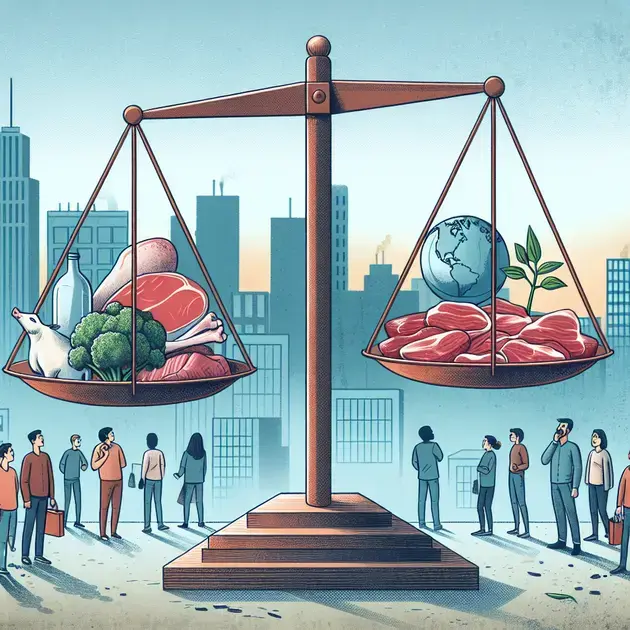Title: Environmental Sustainability and Meat Consumption Decisions: Unraveling the American Perspective
Introduction:
In recent years, the detrimental environmental impacts of red meat production have gained significant attention worldwide. However, despite increasing awareness of climate change and sustainability concerns, researchers have found that environmental sustainability is not a major factor influencing meat consumption decisions for the majority of Americans. This article aims to delve into this subject and understand why environmental considerations do not prominently feature in Americans’ meat consumption choices.
The Disconnect:
Despite the well-documented evidence linking red meat production to greenhouse gas emissions, deforestation, water pollution, and other sustainability issues, many Americans continue to prioritize taste, convenience, and cultural factors over environmental concerns when choosing their meals. This apparent disconnect raises important questions about the barriers preventing individuals from adopting more sustainable dietary habits.
Cultural Influences:
Food plays a crucial role in shaping cultural identities, traditions, and social interactions. In many American households, meat is deeply ingrained as a staple in traditional diets and family gatherings. The rich history of barbecues, burgers, and steak dinners contributes to a strong cultural attachment to meat consumption, making it challenging for individuals to shift towards more sustainable alternatives.
Lack of Awareness:
While there has been a growing awareness of the environmental impacts caused by the meat industry, the extent of this knowledge remains limited for many Americans. Research suggests that a significant portion of the population may not fully comprehend the scale and urgency of the climate crisis or its connection to meat consumption. Addressing this gap in information is crucial to encouraging a more conscious approach to food choices.
Cost and Accessibility:
Another key factor influencing meat consumption decisions is the affordability and accessibility of alternative protein sources. Plant-based products and sustainably raised meats often come at a higher price point, making them less accessible to lower-income communities. Additionally, rural areas may have limited availability of these alternatives, further inhibiting individuals from making sustainable choices.
Policy and Industry Actions:
To truly address the dissonance between environmental sustainability and meat consumption, it is imperative for policymakers and the meat industry to take proactive measures. Implementing policies that promote sustainable farming practices, incentivize alternative protein production, and increase public awareness are crucial steps. Furthermore, the industry should invest in research and development to make sustainable alternatives more affordable and readily available to all consumers.
Conclusion:
As awareness of the climate impacts of red meat production continues to grow, it remains evident that environmental sustainability is not a leading consideration for most Americans when it comes to their meat consumption decisions. Cultural influences, limited awareness, cost, and accessibility barriers all contribute to this phenomenon. To foster a sustainable future, it is essential to address these challenges collectively, involving individuals, policymakers, and the meat industry to develop solutions that align taste, tradition, and convenience with environmental stewardship. Only through concerted efforts can we hope to bridge the gap between sustainability and meat consumption in the United States.
Environmental sustainability is not a significant driver when it comes to meat consumption decisions for the majority of Americans, despite the growing recognition of the climate consequences associated with the production of red meat, says a group of researchers.
